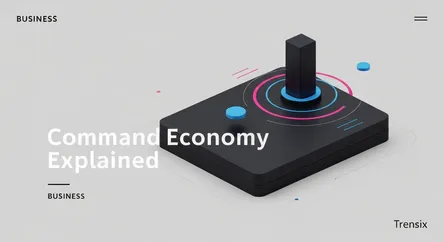Business
Command Economy Explained

Discover what a command economy is, where a central government makes all economic decisions, and why this system is part of modern global discussions.
What is it?
A command economy, or planned economy, is a system where a central government authority makes all key decisions about production and distribution. Unlike a market economy driven by supply and demand, the state dictates what goods are produced, their quantities, and their prices. The government typically owns the means of production, such as factories and capital. Historical examples include the former Soviet Union, while countries like North Korea and Cuba still operate with significant elements of a command economy.
Why is it trending?
The concept is trending amid renewed debates about the role of government in managing economic crises, from pandemics to climate change. Discussions around socialist policies and the rise of state-led capitalism, particularly in China, bring principles of central planning back into focus. Analysts reference command economies to contrast different approaches to industrial policy, wealth distribution, and tackling large-scale national projects, sparking conversations about the balance between economic efficiency and social equity.
How does it affect people?
For citizens, a command economy can mean guaranteed employment and access to essential public services. However, it often results in a severe lack of consumer choice, as the government, not consumer preference, dictates production. This frequently leads to shortages of desired goods and surpluses of others, impacting daily life. Furthermore, it can stifle innovation and limit individual economic freedom, as career paths and entrepreneurial opportunities are centrally controlled rather than driven by personal ambition or market demand.